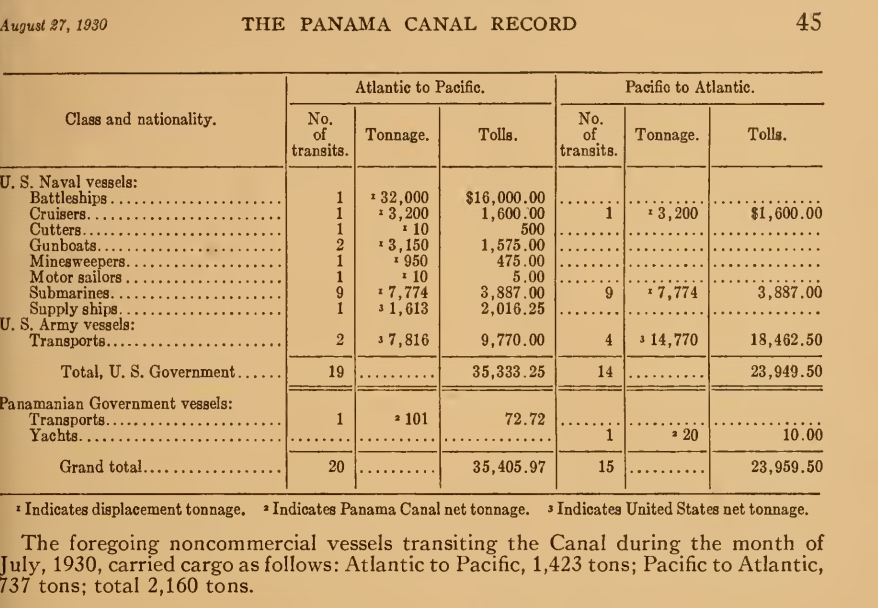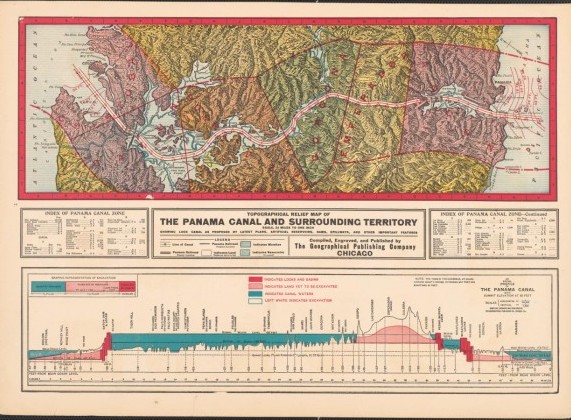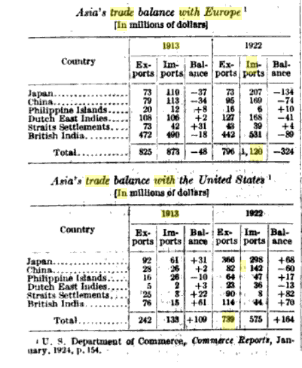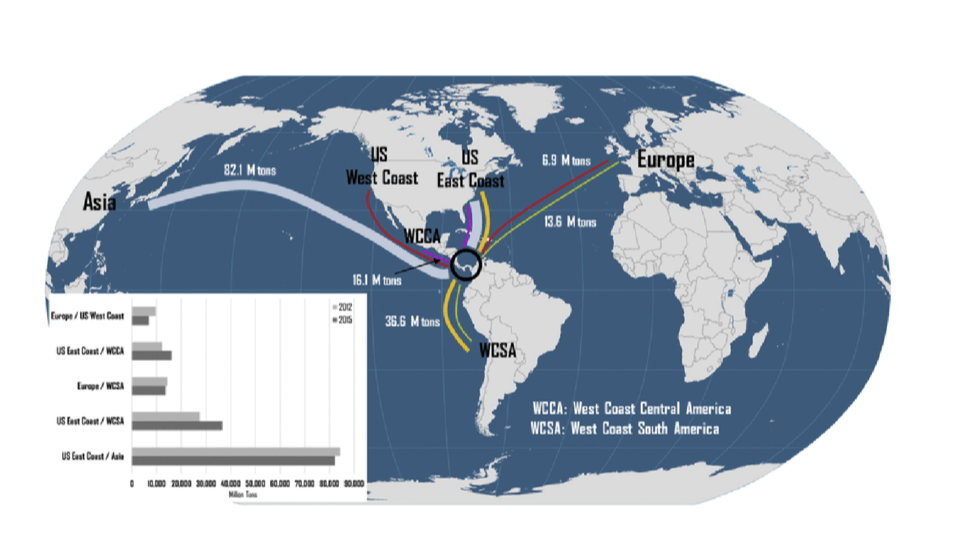
The Panama Canal Record (45), Government Info.org, 1930
This data shows the amount of military vessels, and what kind of vessles were transported through the Panama Canal in 1930– proving that military was a primary user of the Canal.
The Panama Canal rearranged the political power of many nations, proving substantially beneficial to certain governments, yet disadvantageous to others.
The United States of America,
Thriving economically from the Canal, simultaneously gained a military advantage.

The Panama Canal Record (45), Government Info.org, 1930
This data shows the amount of military vessels, and what kind of vessles were transported through the Panama Canal in 1930– proving that military was a primary user of the Canal.

Map of the Panama Canal, Geographical Publishing Co., 1909
This image showcases the route of the Panama Canal, and therefore it's most apparent benefit– it's distance cuts.
The Panama Canal allowed the military to ship troops and arms at a greater efficiency due to the distance-cuts. This grants superior military power because America has the potential to respond to more attacks at a faster rate. Not to mention, for external battles, military from opposing sides of the country have a potentially shorter route. Both of these factors lead to enhanced military power, and therefore political power.
Initially, Panama found themselves in a severely disadvantageous political position due to an unjust treaty.
"The Republic of Panama grants to the United States in perpetuity a monopoly for the construction, maintenance and operation of any system of communication by means of canal or railroad across its territory between the Caribbean Sea and the Pacific ocean,” - Article 5, Hay-Bunau-Varilla Treaty, November 18, 1903
“The United States may import at any time into the said zone and auxiliary lands, free of custom duties, imposts, taxes, or other charges, and without any restrictions, any and all vessels, dredges, engines, cars, machinery, tools, explosives, materials, supplies, and other articles necessary and convenient in the construction, maintenance, operation, sanitation and protection of the Canal and auxiliary works, and all provisions, medicines, clothing, supplies and other things necessary and convenient for the officers, employees, workmen and laborers in the service and employ of the United States and for their families,” - Article 13, Hay-Bunau-Varilla Treaty, November 18, 1903,
“The Republic of Panama grants to the United States within the limits of the cities of Panama and Colon and their adjacent harbors and within the territory adjacent thereto the right to acquire by purchase or by the exercise of the right of eminent domain, any lands, buildings, water rights or other properties necessary and convenient for the construction..." -Article 7, Hay-Bunau-Varilla Treaty, November 18, 1903,
These articles increase America’s power over Panama to an extent where Panama could not control many of its own infrastructure or economic presence. America had the right to exercise a monopoly over all construction within Panama, and the ability to tax whatever they desire. This makes the state of Panama ancillary on an external nation, which weakens their political stance. All in all, the Panama Canal shattered the barrier of the Pacific Ocean in regards to military, and gave America more power for years to come.
Geopolitical Order and Political Controversy
Video of USS Denver, 1943, DocsTeach,
This video documents one instance of the Panama Canal influencing geopolitics– by aiding the US during WW2.
Without the Panama Canal, the vast majority of Pacific War operations during WW2 would have been infeasible.

Dictionary of Tariff Information, 1924, U.S. Government Printing Office

Map of trade using the Canal, 2015, by Rodrigue Jean-Paul, published by the Governance of Intermediacy
On the whole, Asia and Europe were winners in some areas and losers with others as a consequence of the Panama Canal. There was a drastic increase in trade between the US and Asian nations from 1913— which is one year before the Canal’s construction— and 1922. Further, with the more recent data of the map, it's shown that Asian countries continued to trade through the Panama Canal. This indicates a new trade relationship, which indirectly reduces Europe’s political power because of the Asian countries’ decreased reliance on trade with Europe. Conversely, with the Panama Canal, Europe also benefited since they could trade more with the US. Therefore, the notion that the Canal was either exclusively advantageous or disadvantageous for these two continents is debatable; however, it’s indisputable that the Panama Canal changed the political landscape of trade, and in doing so, broke political barriers.